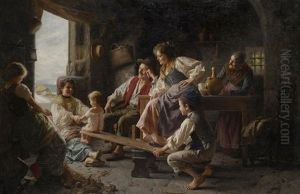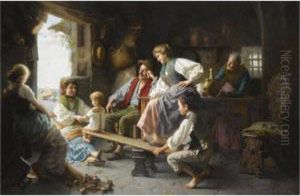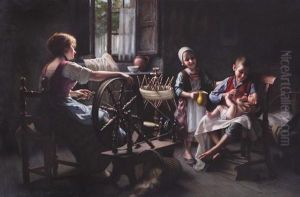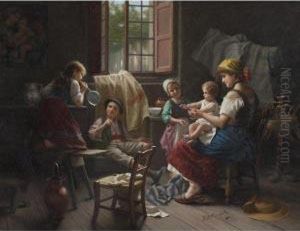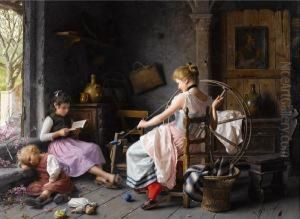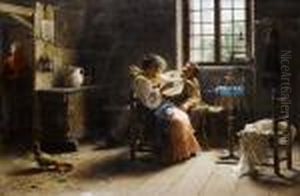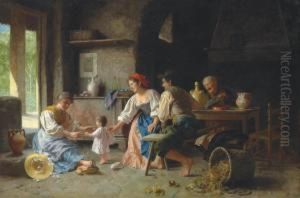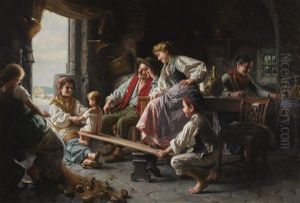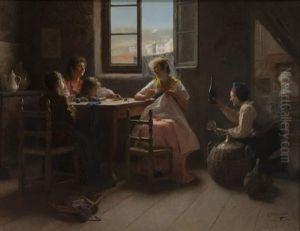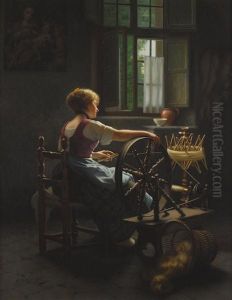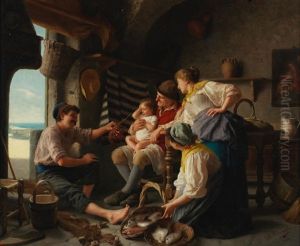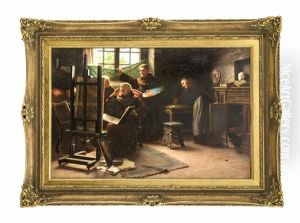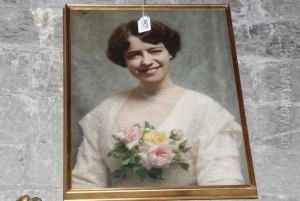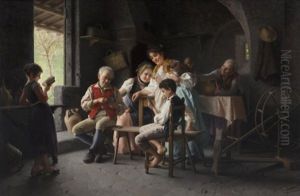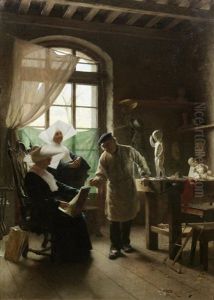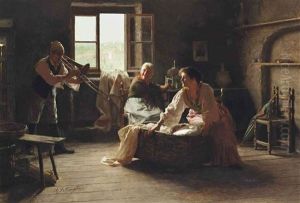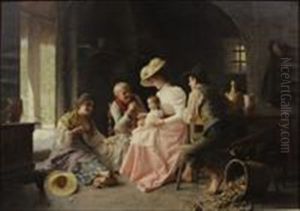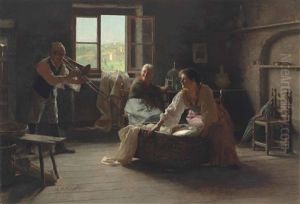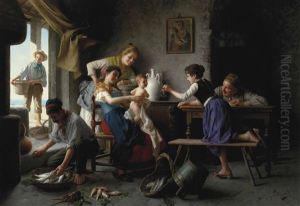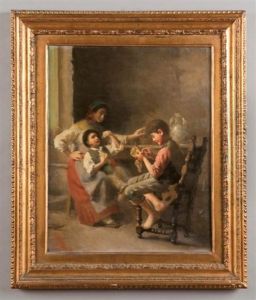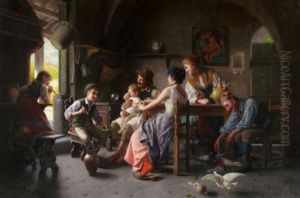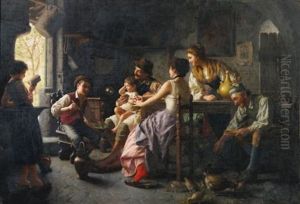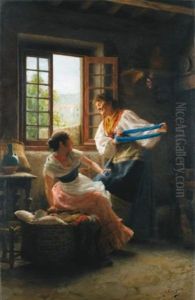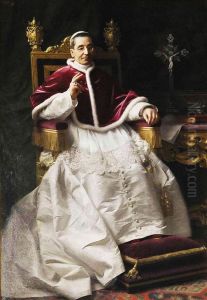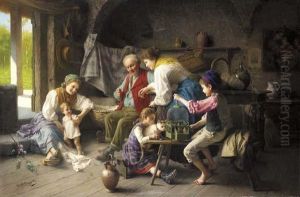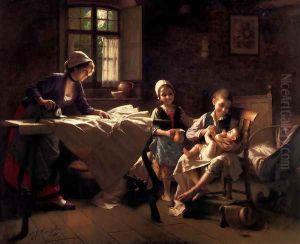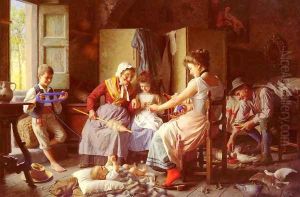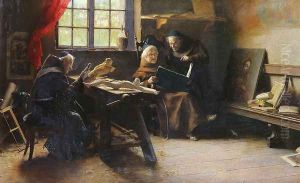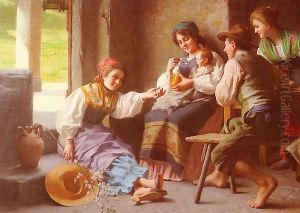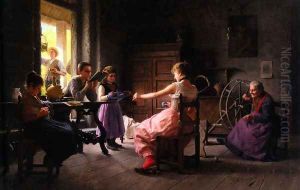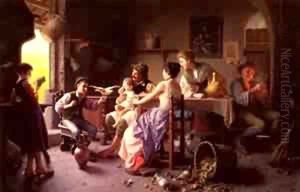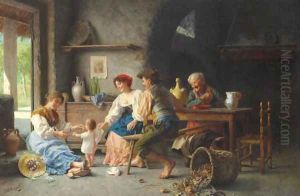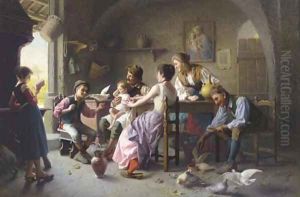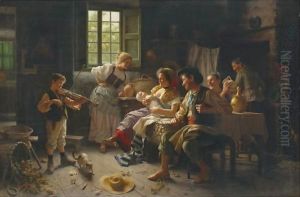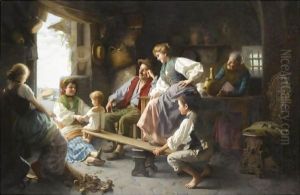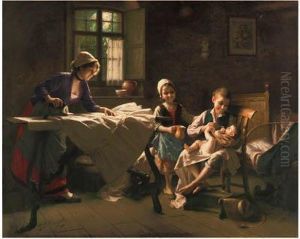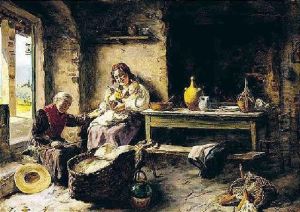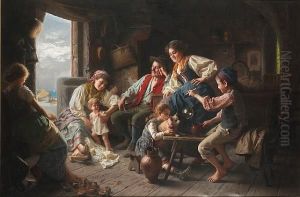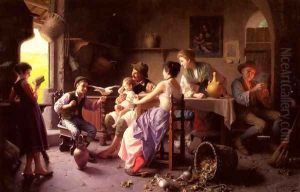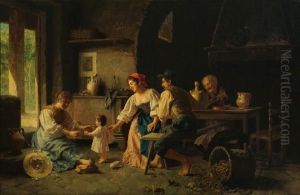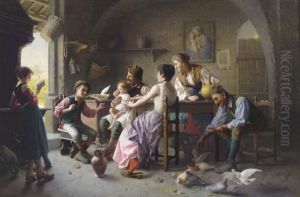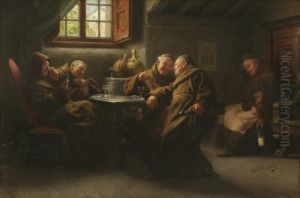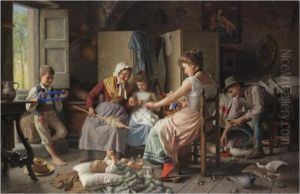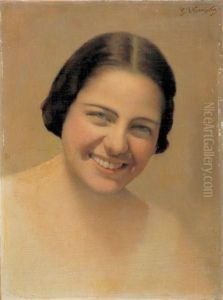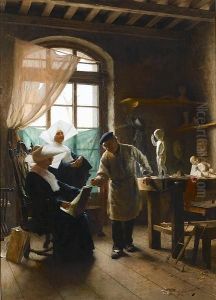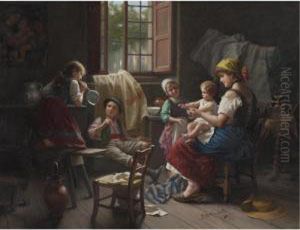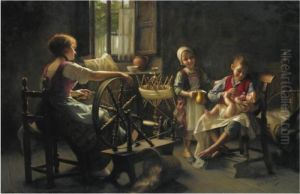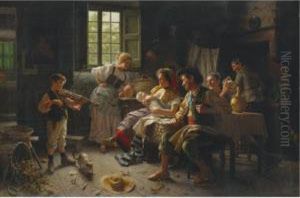Giovanni Battista Torriglia Paintings
Giovanni Battista Torriglia was an Italian genre painter, born on October 6, 1858, in Genoa, Italy. His works are primarily known for depicting scenes of everyday life, with a particular focus on the intimate moments of domestic life and the world of children and their mothers. He had a keen eye for capturing the warmth and simplicity of domestic interiors and the emotional bonds between family members.
Torriglia received his initial training at the Accademia Ligustica di Belle Arti in Genoa, where he studied under the guidance of renowned artists such as Cesare Viazzi and Tammar Luxoro. His education provided a solid foundation in classical painting techniques, which he later adapted to his own style and subject matter.
In the late 19th and early 20th centuries, Torriglia gained recognition for his genre paintings, which often reflected the trends and interests of the bourgeoisie of the time. His works were appreciated for their sentimental appeal, attention to detail, and the ability to evoke nostalgia for an idealized version of family life.
Throughout his career, Torriglia exhibited his works widely, including at the Genoa Promotrice, the National Exhibition in Milan, and various international expositions. His paintings were well-received, and he garnered several awards, which helped to establish his reputation both in Italy and abroad.
Torriglia's artistic output includes not only oil paintings but also watercolors and illustrations. His illustrations were published in various magazines and books, further spreading his acclaim.
Despite the popularity of his work during his lifetime, Giovanni Battista Torriglia's name is not as widely recognized today as some of his contemporaries. Nonetheless, his paintings continue to be appreciated by collectors and art enthusiasts, particularly those with an interest in genre painting and Italian art of the late 19th century. Torriglia passed away on February 18, 1937, leaving behind a legacy of charming and evocative images that capture the essence of his era's domestic life.

